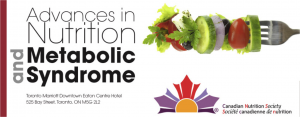
Fasting has been practiced for centuries around the world, typically for religious reasons. Now, intermittent fasting is becoming a trendy way to lose weight. But does it really work and should you try it?
There are a few variations of intermittent fasting:
Alternate day fasting was researched by Dr. Krista Varady who is an Associate Professor of Nutrition at the University of Illinois in Chicago. The idea is to alternate back and forth between eating about 500 calories one day and then eating a moderate high-fat diet the next day. In her research trials, she found that adults lost an average of 11 pounds in 12 weeks. Plus, the alternate day fasting lowered the participants’ levels of the “bad” LDL (Low Density Lipoprotein) cholesterol which helps to lower their overall risk for heart disease.
The 5:2 fasting diet is a modified version of the alternate day fasting diet. The general idea here, according to proponent Dr. Mark Mattson, is to eat no more than 500 calories on two non-consecutive days each week. On the other five days of the week, you can eat your usual diet. Mattson is a Professor of Neuroscience at the John Hopkins University. In his research, overweight and obese women who followed the 5:2 diet for six months lost just slightly more weight than women who were following a low calorie diet. Mattson is now exploring whether this diet can help improve brain health in seniors.
Time-restricted eating is another type of intermittent fasting where you only eat during a small window of time. This includes ideas such as a longer nighttime fast (for example, not eating from 7 pm to 6 am) or eating just one big meal a day instead of three typical meals. Animals who fast in these ways do lose weight, but there are hardly any scientific studies with people.
Here’s our advice:
1. Intermittent fasting is not easy. In fact, 10 to 20% of participants who try intermittent fasting find it too difficult and quickly stopped. Those who stick with the diets admit that it is very challenging for at least the first few weeks.
2. Intermittent fasting isn’t a miracle weight loss cure. The studies show that you can lose about the same amount of weight whether you fast intermittently or just cut back on calories every day.
3. Intermittent fasting is NOT for everyone. For example, if you are pregnant, underweight or have type 2 diabetes, then intermittent fasting is not suitable and can be dangerous for you.
4. The best “diet” is the one you can stick with for the rest of your life. Healthy eating is about enjoyment, not deprivation. If you’re interested in trying intermittent fasting, perhaps start with the least extreme option of extending your nighttime fast. Think of the motto “Done after dinner.” Eat your dinner and then skip any bedtime snack. Refuel with a good breakfast in the morning.
5. Talk to a registered dietitian for safe and expert advice on diets and weight loss.


